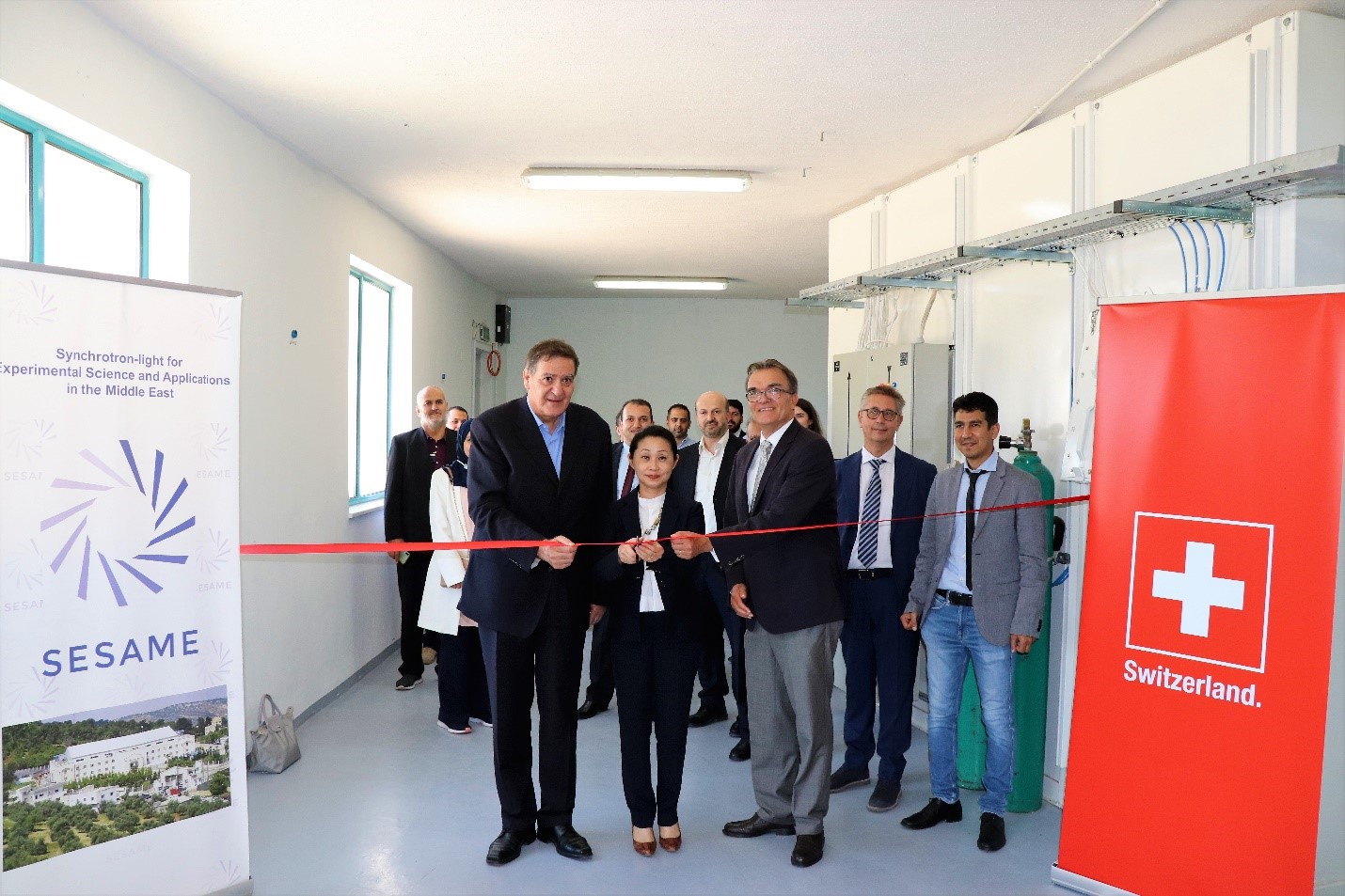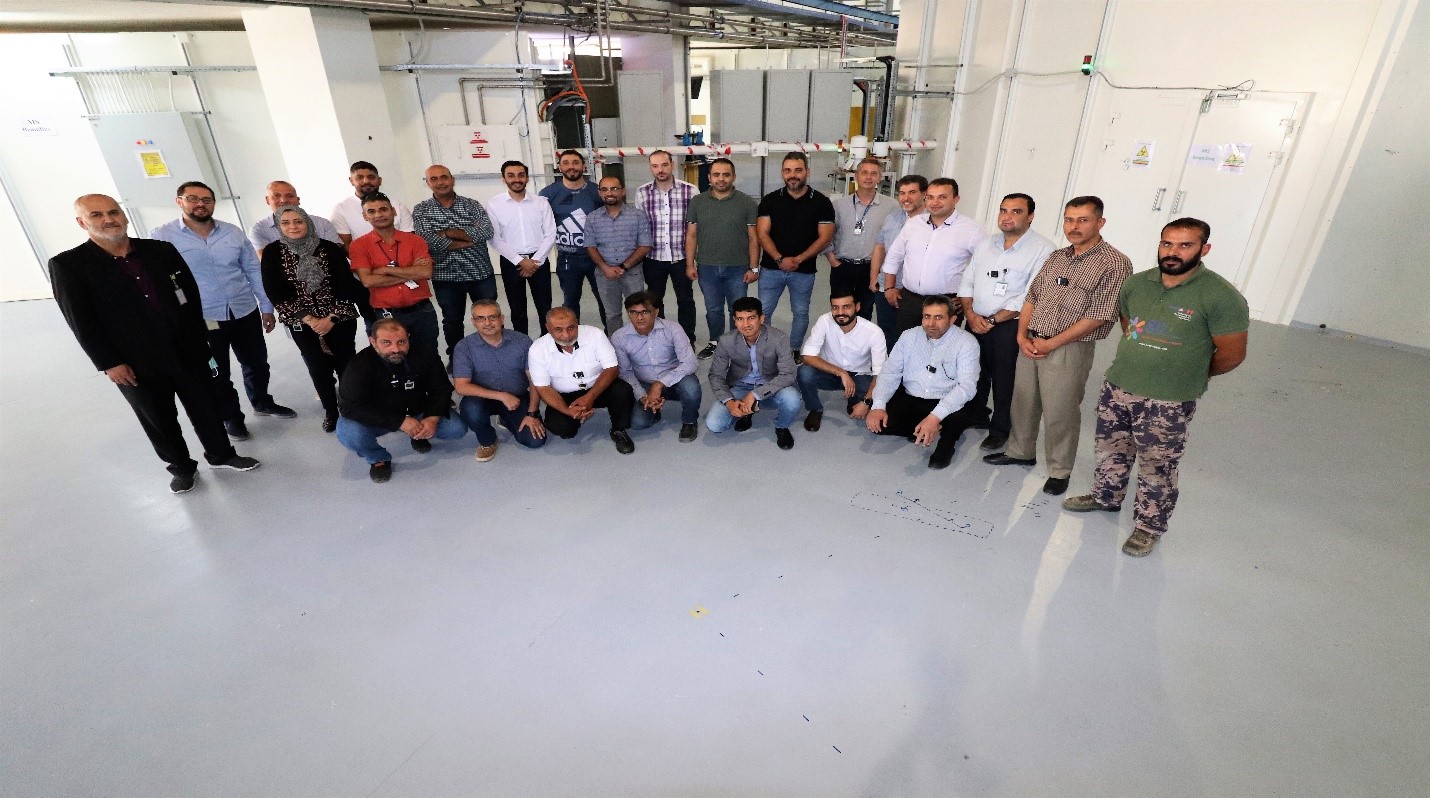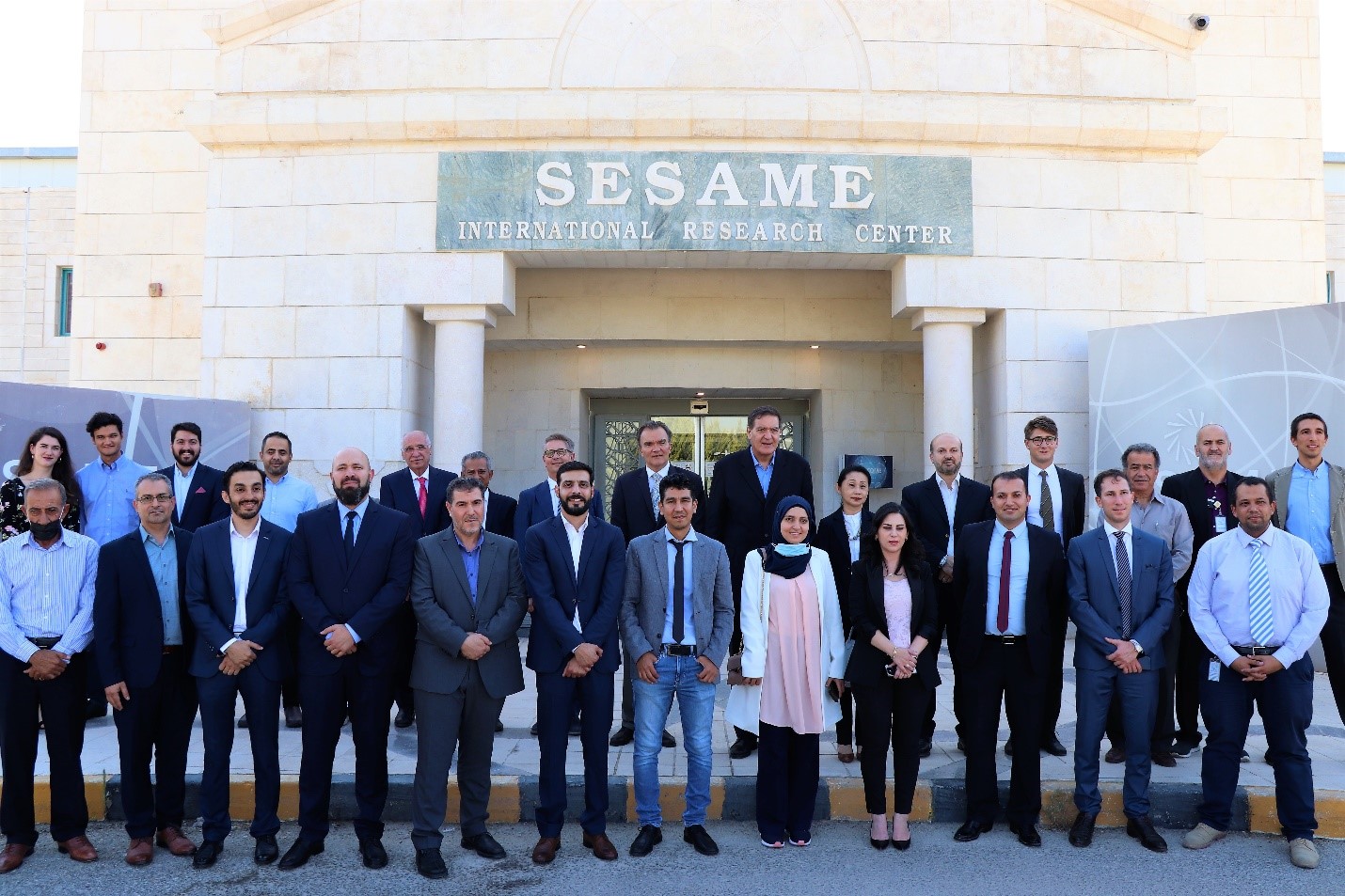
The 8th of July 2021 marked the inauguration of SESAME’s Materials Science (MS) beamline. The Ambassador of Switzerland to Jordan, H.E. Mr. Lukas Gasser, along with members of his embassy team, and UNESCO’s Representative to Jordan, Ms. Min Jeong Kim, were welcomed to the inaugural ceremony by the Director of SESAME, Professor Khaled Toukan, and the Directors of SESAME.
In his welcoming remarks, Khalid Toukan pointed out that the beamline now allowed the users of SESAME to obtain diffraction data of a quality unparalleled in any laboratory in the region.
The MS beamline is heavily based on the MS X04SA beamline previously in operation at the Swiss Light Source, and its donation to SESAME by the Paul Scherrer Institute (PSI) has resulted in SESAME having a powerful and extremely precise tool to investigate matter at the micro-, nano- and atomic-scale.
A ribbon officially inaugurating the beamline was cut by H.E. Mr. Lukas Gasser and Professor Khaled Toukan, together with Ms. Min Jeong Kim.
Work on the MS beamline had started in 2015, with the adaptation of the design of the MS X04SA beamline to the characteristics of SESAME’s machine. In 2016, after receiving the donation of another major component, a detector from the Swiss company Dectris, execution of the project was fast-tracked, and the installation phase took place between 2017 and 2019, which is when SESAME received a diffractometer for the beamline as a donation from the Diamond Light Source. Upon sourcing the necessary equipment, the MS beam was first delivered to SESAME’s experimental station at the end of 2019. Fine tuning and characterization of its performance continued during the Covid-19 pandemic, and in December 2020, the beamline started hosting its first users. A first paper utilizing data taken at the MS beamline has already been published in a high-impact journal.

Switzerland became one of the Observer countries of SESAME in 2010. Since then, but even before this, it has been a firm proponent of the Centre and has been very generous in the help it has provided. This has included inter alia highly valuable advice, training and assistance by PSI that spanned optimization of the overall SESAME timing system of the injection process from the microtron to the booster, the design of components, and support for the dismantling of the MS X04SA beamline which was to be donated to SESAME. This support continues today and, together with INFN (Istituto Nazionale di Fisica Nucleare) in Italy, PSI is financing the purchase of critical electronic components for the injector of SESAME.
During the ceremony, the Ambassador of Switzerland along with his embassy team, and UNESCO’s representative to Jordan were taken on a tour of the Centre. They were shown the beamline facilities by the Scientific Director, Dr. Andrea Lausi, and informed of the many scientific applications being carried out at SESAME. SESAME’s MS beamline scientist, Dr. Mahmoud Abdellatief, gave a presentation on the numerous applications possible with the MS beamline, and explained how experiments performed at the beamline may boost scientific research in the region.
At the close of the tour, H.E. Mr. Lukas Gasser congratulated Professor Khaled Toukan and his staff for all that had been accomplished. He expressed great satisfaction with the important role Switzerland had played, and continued to play, in SESAME given that it allows scientists from the region to carry out state-of-the-art research and helps develop collaborative projects between scientists with diverse cultural and political backgrounds.


